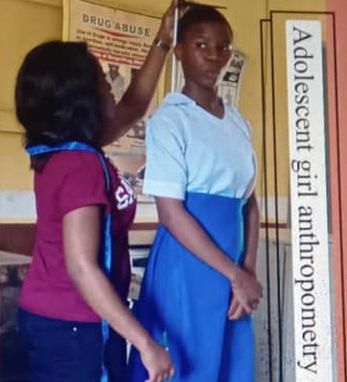Region, Location, and Age-Specific Comparison of Nutritional Status of In-School Adolescent Girls (10-19 years) in Nigeria
Abstract
Background
Nutritional status among female adolescents in Nigeria is becoming a major concern because it determines health outcomes and productivity in their adult years. There is a growing recognition of the potential to promote a healthy start to life for the next generation by addressing health and nutritional risks in adolescents.
Objective
This study assessed the nutritional status of in-school adolescent girls in Nigeria and made comparisons across regions, locations, and age groups.
Methods
A multistage stratified random sampling procedure was used to select participants from three geopolitical zones in Nigeria for this descriptive cross-sectional study of 2261 in-schooladolescent girls aged 10 -19 years. Body mass index-for-age (BMI), waist-hip-ratio (WHR), and waist-height-ratio (WHtR) were calculated from weight, height, hip, waist, and mid-upper arm circumferences measurements.
Results
The mean age was 14.9 years (± 1.78 years), the mean body weight was 47.8 kg (± 9.02 kg), compared to a calculated mean ideal weight of 54.5 kg (± 9.05 kg). Using BMI, 9.8% of these adolescent girls were underweight, 7% were either overweight or obese, 47.9% were at risk judging from WHR, 10% had abdominal obesity present using WHtR, 35.7% were malnourished, and 11.8% were obese using MUAC. South East girls were eleven times more likely to have a high BMI (OR=11.341, 95%CI=6.059-21.225) and three times more likely to have a high WHtR (OR=2.870, 95%CI=1.954-4.213) than other regions. The likelihood of being overweight/obese was higher among urban than peri-urban girls; BMI (OR=1.008, 95%CI=0.728-1.395) and MUACoverweight (OR=1.280, 95%CI=0.988-1.657). Older girls, 14-16yrs; WHtR (OR = 1.426, 95%CI = 0.970-2.097) and 17 -19yrs (OR = 1.024, 95%CI = 0.617-1.699) were likely to be overweight/obese compared to 10 -13yrs (OR=3.878, 95%CI=2.385-6.305). Girls 14 -16 were three times and 17-19 were six times more likely to have higher MUACoverweight (OR = 3.878, 95%CI = 2.385-6.305) and (OR=6.371, 95%CI=3.854-10.865), respectively than those at 10-13 years.
Conclusions
These findings underscore the significant disparities in the nutritional status of adolescent girls across regions, locations, and age ranges in Nigeria. This highlights the urgent need for targeted, region-specific nutrition-sensitive intervention programmes among adolescent girls, potentially leading to improved public health outcomes in Nigeria.

Authors retain all copyrights. In making a submission to World Nutrition, they are certifying that all material is theirs except quotations, as indicated, and that they have obtained permission for any photos, tables, or graphics taken from other publications or websites.




